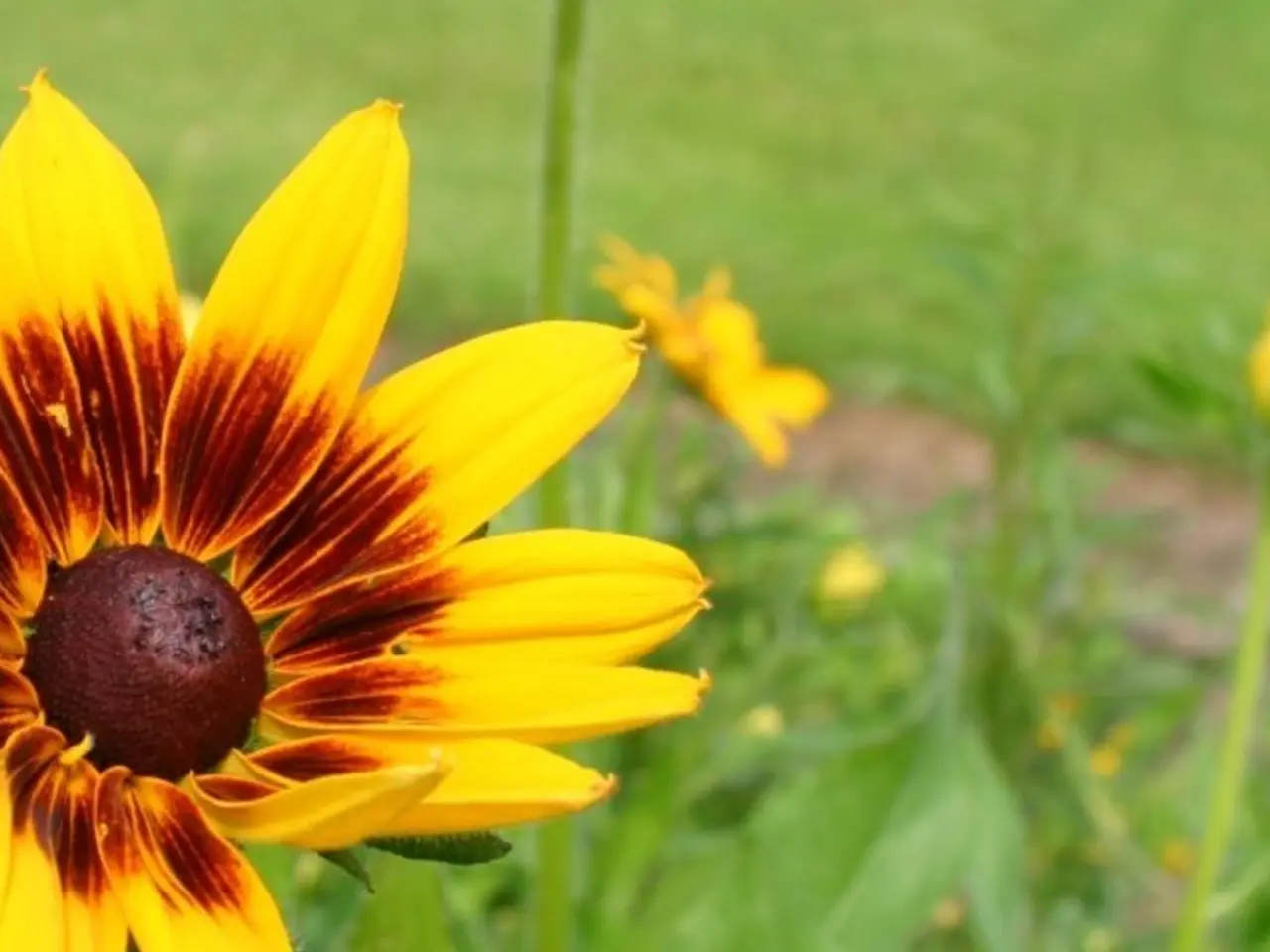"Building a Blossoming Meadow of Wildflowers"
Wildflower meadows, a delightful blend of perennial grasses and wildflowers, are becoming increasingly popular as a means of promoting biodiversity and creating beautiful, sustainable gardens. These meadows can be found in various types, each thriving under specific soil and moisture conditions, plant species compositions, and management practices.
In damp, nutrient-poor soils that may flood in winter but can tolerate dry conditions in summer, you'll find Wetland Wildflower Meadows. These meadows support plants that prefer moisture-retentive or poorly drained soils, such as sedges, rushes, and moisture-tolerant wildflowers. They offer rich habitats for pollinators and wildlife in otherwise challenging wet areas.
On the other hand, Dry or Grassland Wildflower Meadows typically form in well-drained soils and include many drought-tolerant species. To enhance wildflower diversity and control grasses, it is common to introduce Yellow Rattle. This practice helps create a more balanced ecosystem, supporting a wider array of pollinators.
Native Wildflower Meadows are composed of regionally appropriate wildflowers like Gray Goldenrod, Butterflyweed, Black-eyed Susan, and Yarrow. These meadows reflect local ecosystems and conditions, supporting a variety of native pollinators and wildlife. They usually include perennials that bloom over a season, providing long-lasting color and ecological benefits.
When it comes to characteristics, these meadows can have mixes of annuals, biennials, and perennials, with perennials offering longevity and stability in meadow composition.
In terms of planting, autumn or spring is the ideal time to sow wildflowers from plugs or young plants rather than seeds. For those looking to create a wildflower meadow at home, it's essential to understand soil moisture and nutrient status, control competitive grasses, and select appropriate wildflower species to ensure ecological resilience and vibrant seasonal blooms.
Traditional hay meadows, consisting of wildflowers and grasses growing together, are also a beautiful sight. In a garden situation, wildflowers are often sown or planted among perennial grasses for a stunning summer display. To maintain these meadows, they should be cut from late July to September, ideally on a dry day, and any sheltering wildlife should be moved to safety before making the cut.
Sadly, traditional wildflower meadows in the UK have declined by more than 97% since the 1930s. By creating a wildflower meadow at home, no matter how small, you can help declining species. Making your own wildflower plug plants by sowing seeds in trays and planting out later is a reliable way to establish a wildflower meadow.
Monty Don demonstrates creating a wildflower patch using plug plants in a practical video from BBC Gardeners' World. Wildflowers such as coltsfoot, lesser knapweed, devil's bit scabious, field scabious, greater knapweed, ox-eye daisy, cowslip, ragged robin, red campion, red clover, musk mallow, and wild carrot can be grown as plug plants.
A well-managed wildflower meadow provides an excellent habitat for declining wildlife, offering a rich mix of flowers for pollinators, grasses for butterflies and moths to lay their eggs on, and shelter for various wildlife. Wildflower meadows require much less maintenance than a lawn, making them an appealing choice for those seeking a low-maintenance, eco-friendly garden.
Incorporating wildflowers into a home garden allows for the creation of a wildflower meadow, such as the Native Wildflower Meadows, which hosts a variety of local pollinators and wildlife. To boost diversity and manage grass growth, one might consider the common practice of introducing Yellow Rattle in Dry or Grassland Wildflower Meadows.



